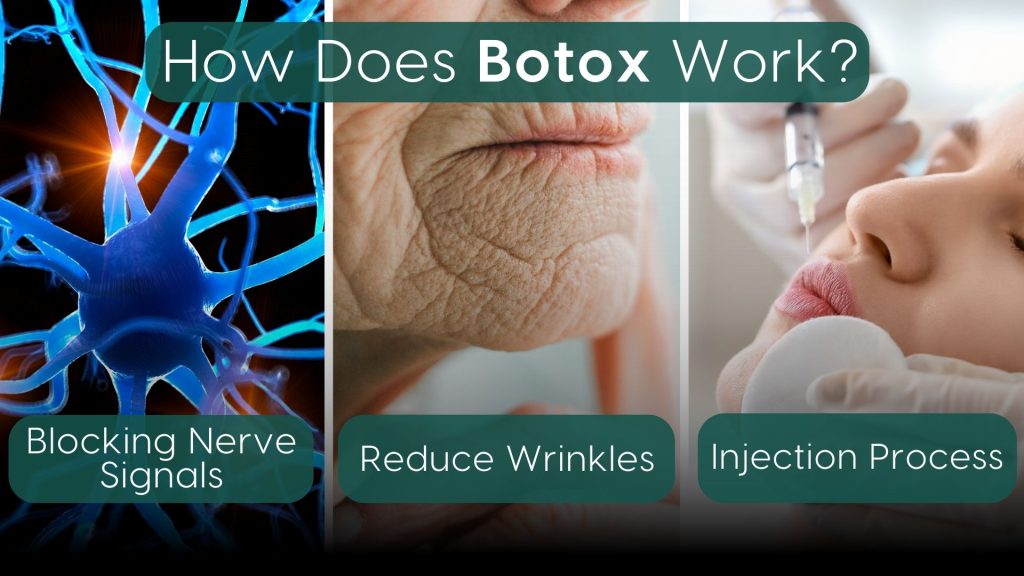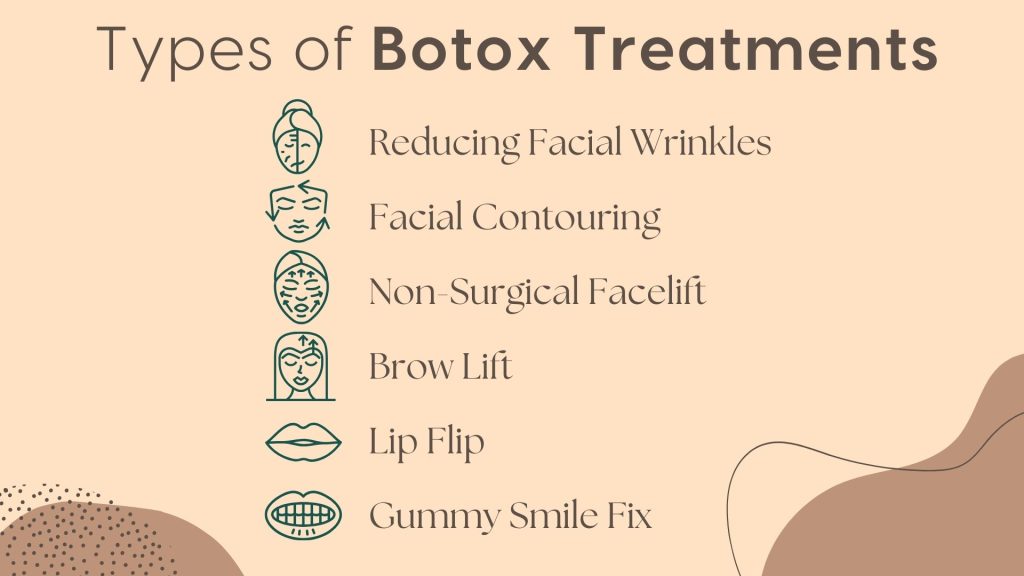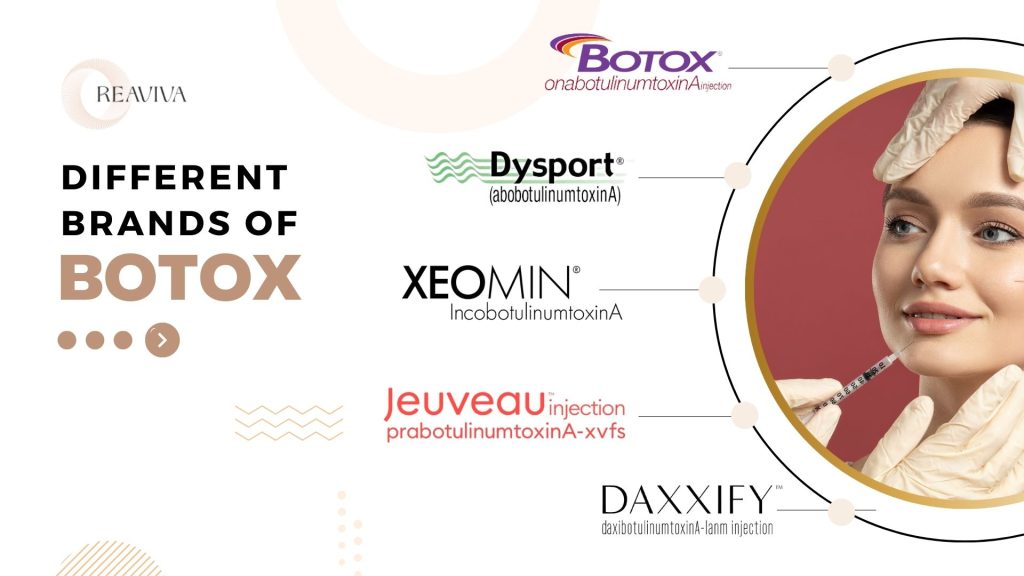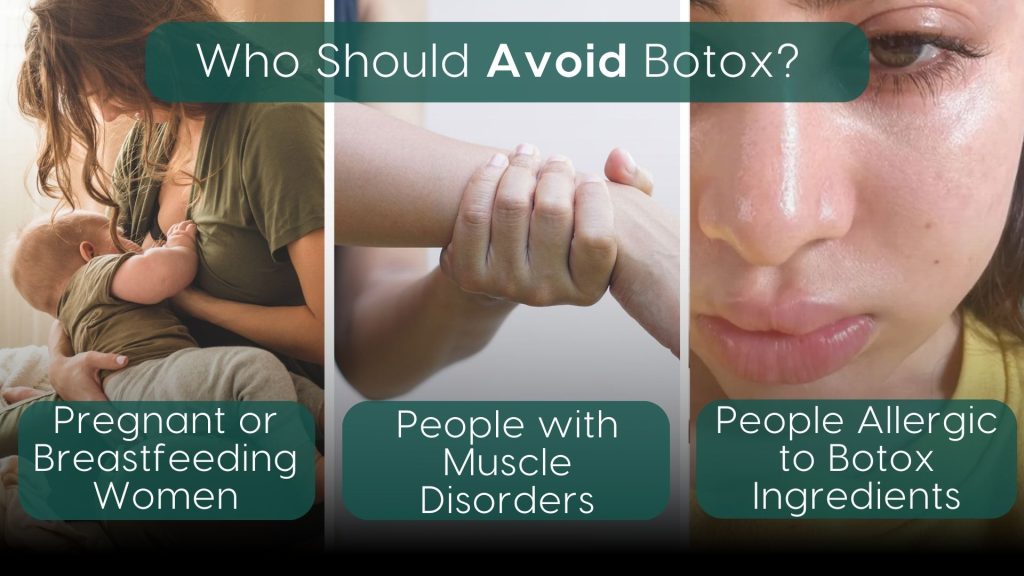Botox is a cosmetic treatment where a purified form of botulinum toxin is injected into specific areas of the body. But what is botox really, and why is it so popular? Simply put, botox treatment helps reduce wrinkles and fine lines by relaxing the muscles in your face for a while. It is a quick and simple procedure that makes your skin look smoother and younger.
Botox comes from a bacterium called Clostridium botulinum. Botox injections use a tiny, controlled amount of this toxin to give both cosmetic and medical benefits. It was first approved by the FDA for medical uses like treating muscle spasms and migraines. Now, botox is best known for helping to reduce wrinkles, especially as a botox treatment for face to make people look younger.
The botox meaning has changed over time. Today, it’s not just about beauty treatments but also a way to treat some medical problems. Botox injections are not very invasive and usually take only about 10 to 15 minutes. This makes it easy for people who want quick results without having to recover for a long time. There are different types of injection depending on whether you want to improve your looks or treat a health issue.
Just like Pac Cosmetics, Reaviva also often offers botox treatment options, making sure that clients can see certified experts. The botox injection price can change based on things like how many units are used and where you want it done. But for a lot of people, it’s worth the cost because of the visible results.
Knowing what is botox treatment and how it works can help you decide if it’s right for you. Whether it’s for reducing wrinkles or treating certain health problems, botox is still one of the most popular types of injection today.
How Does Botox Work?

- Blocking Nerve Signals: Botox works by blocking nerve signals that tell your muscles to move. When these signals are blocked, the muscles in that area relax. This is how botox helps reduce wrinkles by stopping certain muscles from moving.
- How Botox Works Inside the Body?
- Binding: After the injection, botox attaches to special receptors on the nerve endings where nerves meet muscles.
- Internalization: The nerve then absorbs the botox, which gets inside the nerve cell.
- Translocation: Once inside, the botox changes form, allowing part of it to move into the nerve cell.
- SNARE Protein Breakdown: The botox breaks down certain proteins called SNARE proteins. These proteins are important because they help the nerve release a chemical called acetylcholine.
- Stopping Acetylcholine Release: By breaking down these proteins, botox stops the nerve from releasing acetylcholine. Without this chemical, the muscle doesn’t get the message to contract, which makes it relax temporarily.
- Relaxing Muscles to Reduce Wrinkles: By relaxing the muscles, botox treatment for face helps reduce the appearance of wrinkles. Wrinkles form over time because of repeated muscle movements, so by stopping these movements, the skin becomes smoother and looks younger.
- Injection Process: During a botox injection, a small amount of botulinum toxin is injected into the targeted area. The process only takes about 10 to 15 minutes, and you can usually return to your normal routine right after. However, it is a good idea to avoid heavy exercise for at least 24 hours afterward. This botox injection stops the muscles from contracting, which reduces wrinkles and other problems.
Botox is often used to relax facial muscles and make frown lines, forehead lines, and crow’s feet less visible for around three to four months. When done by a trained professional, botox is generally safe, but there can be side effects like bruising, headaches, or swelling. There are also different types of botox treatments besides wrinkle reduction, such as botox hair treatment to help make hair smoother. However, these treatments can also have side effects like dryness. Since botox comes from a controlled form of botulinum toxin, it is important that it is given by an expert to avoid any problems. The cost of botox can vary, especially if combined with other treatments like botox and fillers. Always talk to a professional to see if botox is right for you and to make sure it is done safely.
Types of Botox Treatments
Cosmetic Uses of Botox
Botox is well known for helping reduce wrinkles and fine lines. These treatments are popular because they provide a way to get smoother, younger-looking skin without surgery. Here are some common cosmetic uses:

- Reducing Facial Wrinkles:
- Forehead Lines: Botox can smooth out the horizontal lines on your forehead by relaxing the muscles there.
- Frown Lines: These are the lines between your eyebrows, also called glabellar lines. Botox helps relax these muscles to reduce those lines.
- Crow’s Feet: These are the fine lines around the eyes. Botox can help smooth them out by relaxing the muscles around your eyes.
- Facial Contouring:
- Slimming the Jawline: Botox can be injected into the jaw muscles (masseter muscles) to make the face look slimmer and more V-shaped. This is popular among celebrities to achieve a more contoured look.
- Non-Surgical Facelift:
- Combining with Other Treatments: Botox can be combined with other procedures, like thread lifts, to help lift the face without surgery. This gives quick results with little recovery time.
- Brow Lift: Botox can lift the eyebrows by relaxing the muscles that pull them down, which makes the eyes look more open and fresh.
- Lip Flip: A small amount of botox can be used to relax the upper lip muscles, which makes the lip curl outward slightly and look fuller.
- Gummy Smile Fix: If you show too much of your gums when you smile, botox can relax the upper lip so less of your gums show, making your smile look more balanced.
Medical Uses of Botox

Botox is also used to treat several medical conditions by blocking nerve signals and reducing muscle activity. Here are some common medical uses:
- Chronic Migraines: Botox is approved for preventing chronic migraines. It helps by blocking pain signals, which can make migraines happen less often and be less severe.
- Excessive Sweating (Hyperhidrosis): Botox can treat people who sweat too much, even when they aren’t hot or active. It works by blocking the signals that tell the sweat glands to produce sweat.
- Muscle Spasms and Stiffness: Botox is used for treating muscle stiffness and spasms, such as those in cerebral palsy or after a stroke. It helps relax the muscles and makes movement easier. It can also help with neck muscle spasms, known as cervical dystonia.
- Overactive Bladder: For people with an overactive bladder, botox can be injected into the bladder muscle to help reduce symptoms like frequent urination or urgency.
- Eye Problems: Botox is also used to treat issues like crossed eyes (strabismus) and uncontrolled blinking (blepharospasm). By relaxing the eye muscles, botox can help improve these conditions.
Different Brands of Botox
There are several brands of botulinum toxin type A, each with its own features:

- Botox (OnabotulinumtoxinA): The most well-known brand, used for both cosmetic and medical purposes.
- Dysport (AbobotulinumtoxinA): This spreads more widely, making it a good choice for larger areas.
- Xeomin (IncobotulinumtoxinA): This brand has no extra proteins, which might help reduce the chance of developing resistance to it.
- Jeuveau (PrabotulinumtoxinA): Mainly used for cosmetic treatments, with effects similar to Botox.
- Daxxify (DaxibotulinumtoxinA): A newer brand, noted for longer-lasting effects, mainly used for cosmetic purposes.
Each brand works a little differently in terms of how fast it starts working, how long it lasts, and how much it spreads. The best choice depends on the patient’s needs and what the healthcare provider thinks will work best.
Botox is used for both beauty and medical purposes. At Reaviva, Our Botox treatments help reduce wrinkles, lift eyebrows, enhance lips, and fix smiles to give a more refreshed look. Medical treatments use Botox to block nerve signals and relax muscles, which helps with conditions like migraines, excessive sweating, muscle spasms, overactive bladder, and certain eye problems. Whether it is for cosmetic or medical reasons, botox can greatly improve quality of life when given by a trained professional.
What to Expect During a Botox Treatment?
If you’re considering Botox, it’s natural to wonder what happens during the procedure. Knowing what to expect can make the process less intimidating and help you feel more comfortable. Here is a detailed overview of what happens during a botox treatment session.
Step-by-Step Guide to a Botox Treatment
- Consultation: Before the treatment, you will have a consultation with your healthcare provider. During this time, you will discuss your goals, the areas you want to treat, and any concerns you have. Your provider will examine your facial muscles and decide on the appropriate amount of botox to use.
- Preparation: Once you decide to move forward, the provider will prepare the treatment area. This involves cleaning the skin to remove any makeup, dirt, or oil. Sometimes, a numbing cream or ice pack may be used to minimize discomfort, especially if you are sensitive to injections.
- Injection Process: The actual botox injection process is quick and usually takes about 10-15 minutes. Your healthcare provider will use a very fine needle to inject small amounts of botulinum toxin into the targeted muscles. Typically, several injections are needed, depending on the size of the treatment area.
- Discomfort: Most patients describe the sensation as a small pinch or stinging feeling. The discomfort is minimal, and because the needles are very thin, most people find it tolerable. If you’re concerned about pain, ask your provider about using a numbing agent to make it more comfortable.
- Post-Treatment Care: After the injections, there may be some slight redness, swelling, or minor bruising around the treated areas, but this usually goes away within a few hours. You can return to your normal activities almost immediately, but it is generally advised to avoid intense physical activity, alcohol, or lying down for at least 4-6 hours after treatment to reduce the risk of complications.
- Recovery and Results: There is no significant recovery time needed for botox, which makes it a convenient option for many people. You can go back to work or your daily routine right after the session. The results of botox usually start to become noticeable within 3-5 days after treatment, with full effects appearing after about two weeks. The results typically last for three to four months, depending on the individual and the area treated.
- Avoid rubbing or massaging the treated area for at least 24 hours to prevent the botox from spreading to unintended muscles.
- Stay upright for a few hours after the treatment and avoid lying down or bending over.
- Avoid intense exercise, alcohol, or exposure to excessive heat (such as saunas) for the rest of the day.
A botox treatment is a quick and straightforward procedure that involves minimal discomfort and no downtime. You start with a consultation to decide on the treatment plan, followed by cleaning and preparing the skin. The injections themselves are fast, typically taking about 10-15 minutes. Afterward, you can expect some mild redness or swelling, but you can resume most of your normal activities right away. Results begin to show in a few days and last for several months. The key to a successful botox experience is to follow the aftercare advice from your healthcare provider and to ensure that the treatment is administered by an experienced professional.
Common Questions to a Botox Treatment
1. How long does a Botox session take?
A typical botox session takes around 10-15 minutes. Including preparation and consultation, the entire appointment may last about 30 minutes.
2. Does Botox hurt?
Most people feel only minor discomfort during the injections, often described as a pinching or stinging sensation. We may use ice or numbing cream to help reduce any discomfort if needed.
Safety, Side Effects, and Risks of Botox
Is Botox Safe?
At Reaviva, we believe in enhancing your natural beauty with treatments that are safe, effective, and tailored to your unique needs. Our Botox treatments, including Baby Botox, are designed to provide subtle, rejuvenating results while maintaining your natural facial expressions.
With a quick 20–30 minute procedure and minimal downtime, Baby Botox involves precise micro-injections to areas like the forehead, crow’s feet, and frown lines. This lighter dose softens fine lines without stiffness, allowing for natural facial movement and a refreshed, youthful appearance.
At Reaviva, we customize every Baby Botox session to help you look and feel your best confident, radiant, and naturally beautiful.
Common Side Effects of Botox Treatment
After getting botox injections, some common side effects can happen. These side effects are usually mild and go away on their own within a few hours or days. The most common side effects include:
- Bruising and Swelling: Since botox is injected with a needle, some bruising and swelling can happen where the injection was given. This is the most common side effect and usually goes away quickly.
- Redness or Irritation: The skin around where botox was injected may become red or irritated for a short time after the treatment.
- Pain or Discomfort: Some people may feel a small amount of pain or discomfort during the injection. It can feel like a tiny pinch or sting, but it doesn’t last long.
- Headaches: Some people may get mild headaches after botox, especially if it was injected around the forehead or brow. These headaches usually go away within a day or two.
Rare but Serious Risks
Serious problems from botox are rare, but it is still important to know about them. These side effects can happen if the botox spreads to other areas or if it is not injected properly. Here are some of the more serious risks:

- Drooping Eyelids or Eyebrows: If botox spreads to muscles it wasn’t meant for, it can cause drooping eyelids or eyebrows. This usually goes away after a few weeks but can be inconvenient.
- Muscle Weakness: Sometimes, muscles near the injection site can become weaker than planned. For example, if botox is injected too close to certain muscles, it could cause them to relax too much.
- Trouble Swallowing or Breathing: In very rare cases, botox can spread to muscles that help you swallow or breathe, making it harder to do these things. This is why it’s important to go to a skilled professional.
- Allergic Reactions: Allergic reactions to botox are rare but can happen. Signs of an allergic reaction can include itching, rash, dizziness, or trouble breathing. If you notice these symptoms, get medical help right away.
Who Should Avoid Botox?
Botox is not right for everyone. Some people should avoid it or talk to a doctor before getting it:

- Pregnant or Breastfeeding Women: There isn’t enough information to know if botox is safe for pregnant or breastfeeding women, so it is usually not recommended.
- People with Muscle Disorders: People with conditions like myasthenia gravis or ALS should avoid botox because it could make muscle weakness worse.
- People Allergic to Botox Ingredients: If you are allergic to any of the ingredients in botox or have had allergic reactions to similar treatments, you should not get botox.
How to Minimize Risks?
To minimize risks, always go to a certified and experienced healthcare provider to get botox. Make sure to tell them about your medical history, health conditions, and any medications you take. A good consultation and careful injection technique can make the procedure safer and more effective.
Botox is generally safe when given by a professional, but it does come with some risks. Common side effects like bruising, redness, and headaches are usually mild and go away on their own. Rare but serious risks include muscle weakness, drooping eyelids, and allergic reactions. To have the best and safest results, choose a skilled provider and follow all post-treatment instructions.
Frequently Asked Questions
Before your Botox appointment, avoid alcohol, aspirin, or anti-inflammatory drugs for at least 24 hours. This helps minimize bruising. Make sure to clean your face and avoid heavy makeup on the day of the treatment.
If you notice any unexpected side effects like severe swelling, breathing difficulties, or muscle weakness away from the treatment site, contact your healthcare provider immediately. For minor side effects like slight redness or tenderness, applying a cold pack can help.
It is best to avoid intense exercise for at least 24 hours after your Botox treatment. Physical activity can increase blood flow, which might cause Botox to spread to unintended areas, reducing its effectiveness.
Avoid rubbing or massaging the treated area for at least 24 hours. You should also avoid lying down for 4 hours and stay away from saunas, hot showers, or intense heat for a day. This helps prevent Botox from spreading to other muscles.
Sometimes, Botox may not provide the expected results right away. It usually takes about 3-7 days for effects to show fully. If you still don't notice a difference after two weeks, contact us and we will adjust the dosage or treatment plan.
To make Botox results last longer, follow all aftercare instructions and avoid smoking or exposure to excessive sunlight. Regular treatments can also help maintain muscle relaxation over time, making the effects more lasting.
Yes, many people combine Botox with other treatments like fillers or chemical peels to achieve their desired look. Talk to your provider about what treatments work well together to ensure they complement each other safely and effectively.














